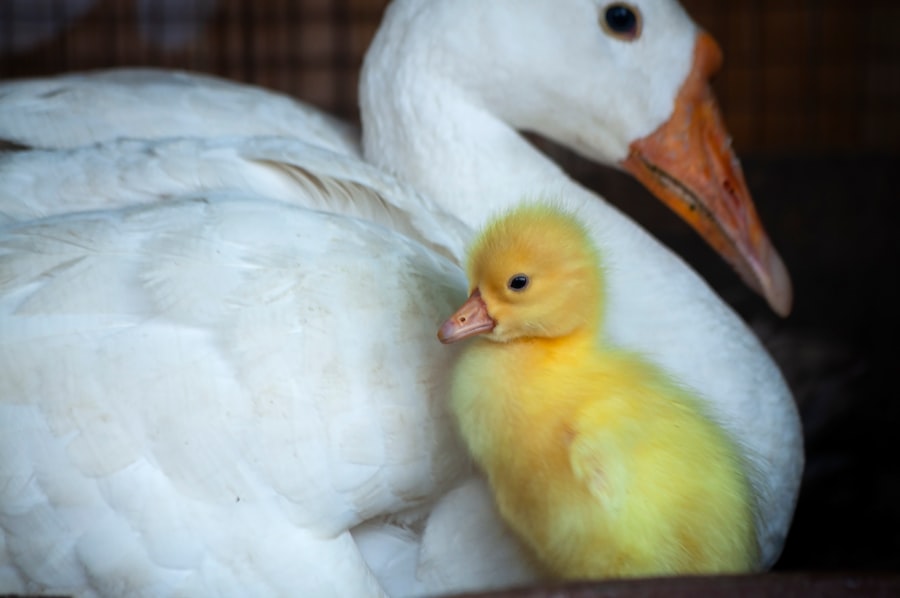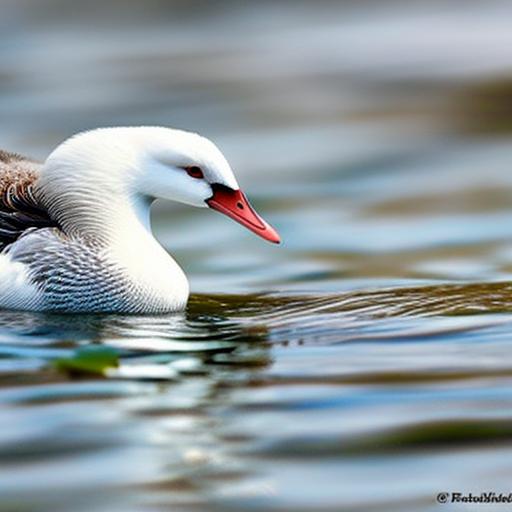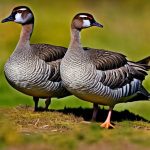White geese breeds are a popular choice among farmers and hobbyists due to their unique characteristics and versatility. These breeds are known for their striking white plumage, which sets them apart from other geese breeds. They are highly sought after for their meat, eggs, and feathers, making them a valuable addition to any farm or homestead.
Key Takeaways
- White geese breeds are a popular choice for agriculture and industry due to their high egg and meat production.
- The most popular white geese breeds around the world include the Embden, Toulouse, and Chinese breeds.
- White geese breeds have a calm and docile temperament, making them easy to handle and care for.
- Proper feeding and care is essential for the health and well-being of white geese breeds, including providing access to clean water and a balanced diet.
- Preservation and conservation efforts are important to maintain genetic diversity and prevent the loss of unique traits in white geese breeds.
Characteristics of White Geese Breeds
White geese breeds come in various sizes and weight ranges, with some breeds being larger and heavier than others. The average weight of a white goose can range from 10 to 20 pounds, depending on the breed. Their feathers are typically dense and soft, providing excellent insulation against cold weather.
In terms of egg-laying capacity, white geese breeds are known to be prolific layers. They can lay anywhere from 30 to 50 eggs per year, with each egg weighing around 150 grams. This makes them a reliable source of fresh eggs for both personal consumption and commercial purposes.
White geese breeds have a relatively long lifespan compared to other poultry species. On average, they can live up to 20 years if properly cared for. This longevity makes them a long-term investment for farmers and hobbyists alike.
History and Origin of White Geese Breeds
White geese breeds have a rich history that dates back centuries. They originated from various regions around the world, including Europe, Asia, and North America. These breeds were selectively bred and developed over time to enhance their desirable traits such as size, egg-laying capacity, and meat quality.
In Europe, white geese breeds were highly valued for their meat and feathers. They were often raised by nobility and used for special occasions and feasts. In Asia, white geese were considered sacred animals and were often kept in temples and monasteries.
Popular White Geese Breeds Around the World
There are several popular white geese breeds found around the world, each with its own unique characteristics and uses. In North America, the Embden and Toulouse geese are widely recognized for their large size and excellent meat quality. These breeds are often raised for commercial meat production.
In Europe, the Sebastopol and Pilgrim geese are popular choices among hobbyists due to their striking appearance and friendly temperament. These breeds are known for their curly feathers and make excellent pets.
In Asia, the Chinese and African geese are highly valued for their meat and egg-laying capacity. These breeds have been selectively bred for centuries to enhance their productivity and adaptability to different climates.
Physical Appearance and Coloration of White Geese Breeds
White geese breeds are easily identifiable by their pure white plumage. They have a sturdy build with a long neck and a rounded body. Their beaks and feet are typically orange or pink in color.
Each white goose breed has its own unique physical features that set them apart. For example, the Embden goose is known for its large size and upright posture, while the Pilgrim goose has a distinctive knob on its forehead.
Behavior and Temperament of White Geese Breeds

White geese breeds are known for their social behavior and strong bond with their flock mates. They are highly protective of their territory and will sound an alarm if they sense any potential danger. However, they can also be friendly and docile towards humans if they are raised with proper care and handling.
White geese breeds are generally hardy and adaptable to different environments. They can tolerate cold weather well but may require additional protection during extreme temperatures. It is important to provide them with adequate shelter and access to fresh water at all times.
Feeding and Care of White Geese Breeds
White geese breeds have specific dietary needs that should be met to ensure their health and well-being. They require a balanced diet consisting of grains, greens, and protein sources. Commercial poultry feed formulated for geese can also be provided to supplement their nutritional needs.
Proper care and housing are essential for the health of white geese breeds. They should be provided with a clean and spacious enclosure that protects them from predators and extreme weather conditions. Regular health checks and vaccinations are also important to prevent common diseases and parasites.
Breeding and Incubation of White Geese Breeds
Breeding white geese requires careful planning and management. It is important to select healthy and genetically diverse breeding stock to ensure the production of strong and productive offspring. Breeding pairs should be introduced during the breeding season, which typically occurs in the spring.
Once the eggs are laid, they can be collected and placed in an incubator or left with the mother goose for natural incubation. The incubation period for white geese eggs is approximately 28 to 34 days. During this time, it is important to provide optimal temperature and humidity levels for successful hatching.
Utilization of White Geese Breeds in Agriculture and Industry
White geese breeds have been utilized in agriculture and industry for centuries due to their valuable resources. They are primarily raised for their meat, which is known for its tenderness and flavor. The feathers of white geese are also highly prized for their insulation properties and are used in the production of pillows, comforters, and other bedding products.
In addition to meat and feathers, white geese breeds are also valued for their eggs. The eggs are larger than chicken eggs and have a rich flavor, making them a popular choice among gourmet chefs and food enthusiasts.
Preservation and Conservation of White Geese Breeds
Preserving and conserving white geese breeds is important to maintain genetic diversity and prevent the loss of valuable traits. These breeds face various threats, including habitat loss, predation, and genetic dilution from crossbreeding with other goose species.
To protect white geese breeds, individuals can get involved in conservation efforts by supporting local breeders and organizations dedicated to preserving rare and endangered breeds. By raising and promoting these breeds, we can ensure their survival for future generations.
In conclusion, white geese breeds are a valuable addition to any farm or homestead. Their unique characteristics, versatility, and historical significance make them a popular choice among farmers and hobbyists worldwide. By learning more about these breeds and considering raising them, we can contribute to their preservation and conservation.
If you’re interested in learning more about white geese breeds, you might also want to check out this informative article on Poultry Wizard’s website: “The Chicken Coop Country Diner.” This article explores the different types of geese that are commonly found in farmhouse chicken coops, including white geese breeds. It provides valuable insights into their characteristics, care requirements, and how they can be a delightful addition to your poultry flock. To read more about it, click here.
FAQs
What are white geese breeds?
White geese breeds are domesticated geese that have white feathers. They are bred for their meat, eggs, and feathers.
What are some common white geese breeds?
Some common white geese breeds include the Embden, Toulouse, and Chinese geese.
What is the Embden goose?
The Embden goose is a large breed of domesticated goose that originated in Germany. They have white feathers, orange bills and feet, and are commonly raised for meat.
What is the Toulouse goose?
The Toulouse goose is a breed of domesticated goose that originated in France. They have white feathers, blue eyes, and are commonly raised for meat.
What is the Chinese goose?
The Chinese goose is a breed of domesticated goose that originated in China. They have white feathers, black bills and feet, and are commonly raised for meat and eggs.
What is the average lifespan of a white goose?
The average lifespan of a white goose is around 10-15 years.
What is the average weight of a white goose?
The average weight of a white goose varies depending on the breed, but can range from 8-20 pounds.
What is the average egg production of a white goose?
The average egg production of a white goose varies depending on the breed, but can range from 20-50 eggs per year.
Meet Walter, the feathered-friend fanatic of Florida! Nestled in the sunshine state, Walter struts through life with his feathered companions, clucking his way to happiness. With a coop that’s fancier than a five-star hotel, he’s the Don Juan of the chicken world. When he’s not teaching his hens to do the cha-cha, you’ll find him in a heated debate with his prized rooster, Sir Clucks-a-Lot. Walter’s poultry passion is no yolk; he’s the sunny-side-up guy you never knew you needed in your flock of friends!







